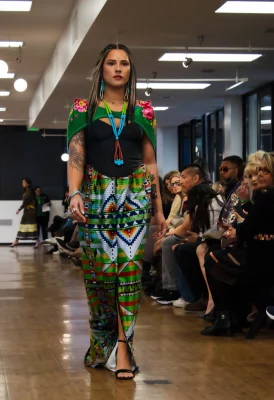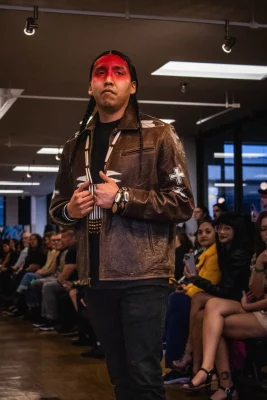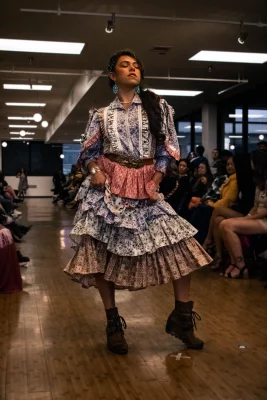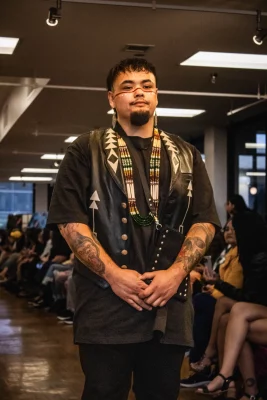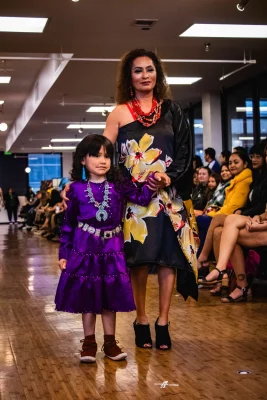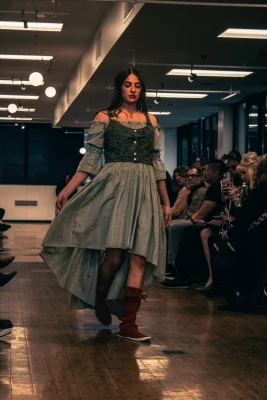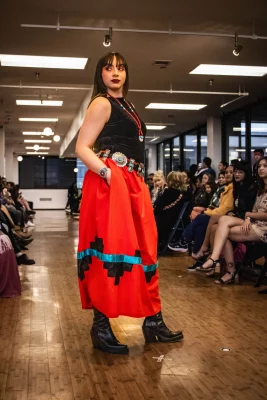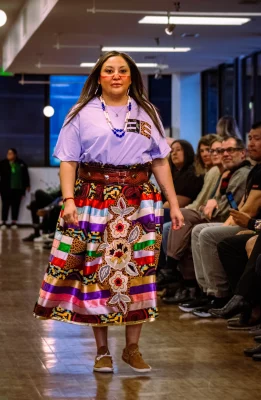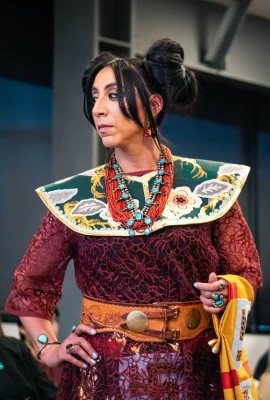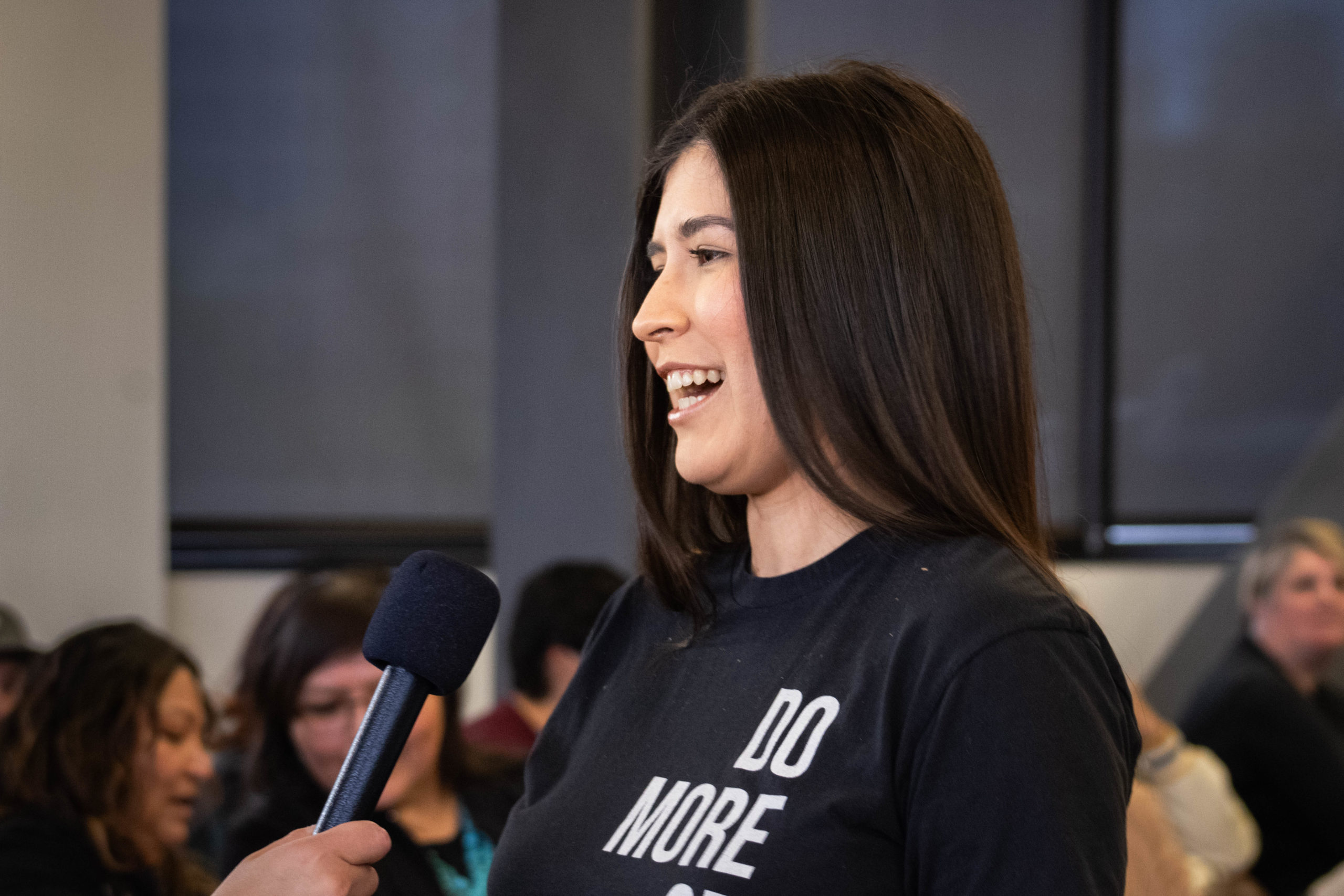
Utah Indigenous Fashion Week Reaches New Heights in Their Second Year
Art and Fashion
Utah Indigenous Fashion Week (UIFW) held their second annual show on Saturday, April 6. I spoke with Jessica Wiarda, designer, illustrator and organizer of UIFW to discuss why the show is creatively and culturally empowering in a way that is only possible through collectives like UIFW, run entirely by Indigenous people, from designers to models. This creates a space of kindred spirits, with similar cultural experiences. “This is an event that is formed organically, by native people, for native people… we’re also resetting what it means to be an ally within those spaces, to help us, because it’s all Indigenous voices making the rules and we’re making a safe space for ourselves, so we can share it with other people,” explains Jessica.
In the show’s second year, the passion and adrenaline runs high. “Our team has expanded, and the energy is actually better than last year, because not only do we have a bigger team, but we haven’t paid ourselves yet … The heart is pumping, and we’re all on board. Also, there’s a lot of new designers that we haven’t seen before,” Wiarda says.
This year’s theme is titled “As We Are,” which Wiarda says “really resonated, because we have always existed, and we’ve always been creating things.” However, often in mainstream fashion scenes, Indigenous designers’ works are stolen for profit. “Reclaiming symbols that have been mass produced, that were probably appropriated back in the ‘70s and now are iconic for Pendleton, or something like that … Pendleton just grabbed designs from rugs for thousands, billions of dollars, and we didn’t see a cent, and so now the fashion week is specific to each individual native designer’s way of expressing themselves.”
The show features traditional and contemporary Indigenous designers, showcasing how traditional roots can influence new native contemporary designs which may emerge. “It’s only recently that we’ve had designers do red carpet looks.” Wiarda explains that the prevalence of a native designer on project runway gave light to Indigenous designers whose work doesn’t necessarily “look Indigenous,” but that representation is still important.
Wiarda is excited to welcome designers from more bands of common Utah tribes such as the Diné and Utes to UIFW this year. “More of those tribes have come out because they heard about the show last year.” Additionally, Indigenous models flew from neighboring states for the show this year, building a strong network.
Wiarda believes that the younger native generation is crucial to the future appreciation of the culture. “Now that our young people have social media, we can express those symbols, learn about those symbols and reclaim those symbols to what we know them to mean,” Wiarda says, “or even to not tell you what they mean, but to just say, ‘Hey, I’m a Navajo using Navajo symbols!’”
In order to maintain authenticity and value, designers must create and share on their own terms, without interference from outside forces that may negate that meaning. “It’s a great space for Indigenous people to feel able to express and explore—it needs to be run by Indigenous people. Not out of exclusion, but just because there’s way less explaining and you can get to core problems.” Thus, powerful teaching and learning moments occur within.
Wiarda recounts last year’s show, when a blessing was performed and a model was unsure what to do. “She was like, ah! My grandmother never taught me this!” The models around her showed her what to do, creating a sense of community that teaches within. “That only would’ve happened if there was a group of Indigenous people around,” she explains.
The UIFW welcomes non-Indigenous people to “learn, observe and fund us,” Wiarda says with a laugh. “The next step is to make [UIFW] a non-profit so we can get funding,” she says excitedly. “All these Indigenous influencers, big or small, we all have the same goal. There’s just no way it’s going anywhere but up. The younger generation of Indigenous people … we are aware of what our grandparents couldn’t build for themselves, we are our ancestors greatest dreams.” The future is bright, colorful, and boundless for UIFW. To learn more about Wiarda, check out her website, jessicawiarda.com.
Read More About Local Indigenous Arts:
Reclaiming Heritage, Reimagining History: SLC Artists Manifest Their Own Destiny
Pathfinder: Reclaiming the Native Narrative With the Winding Path
